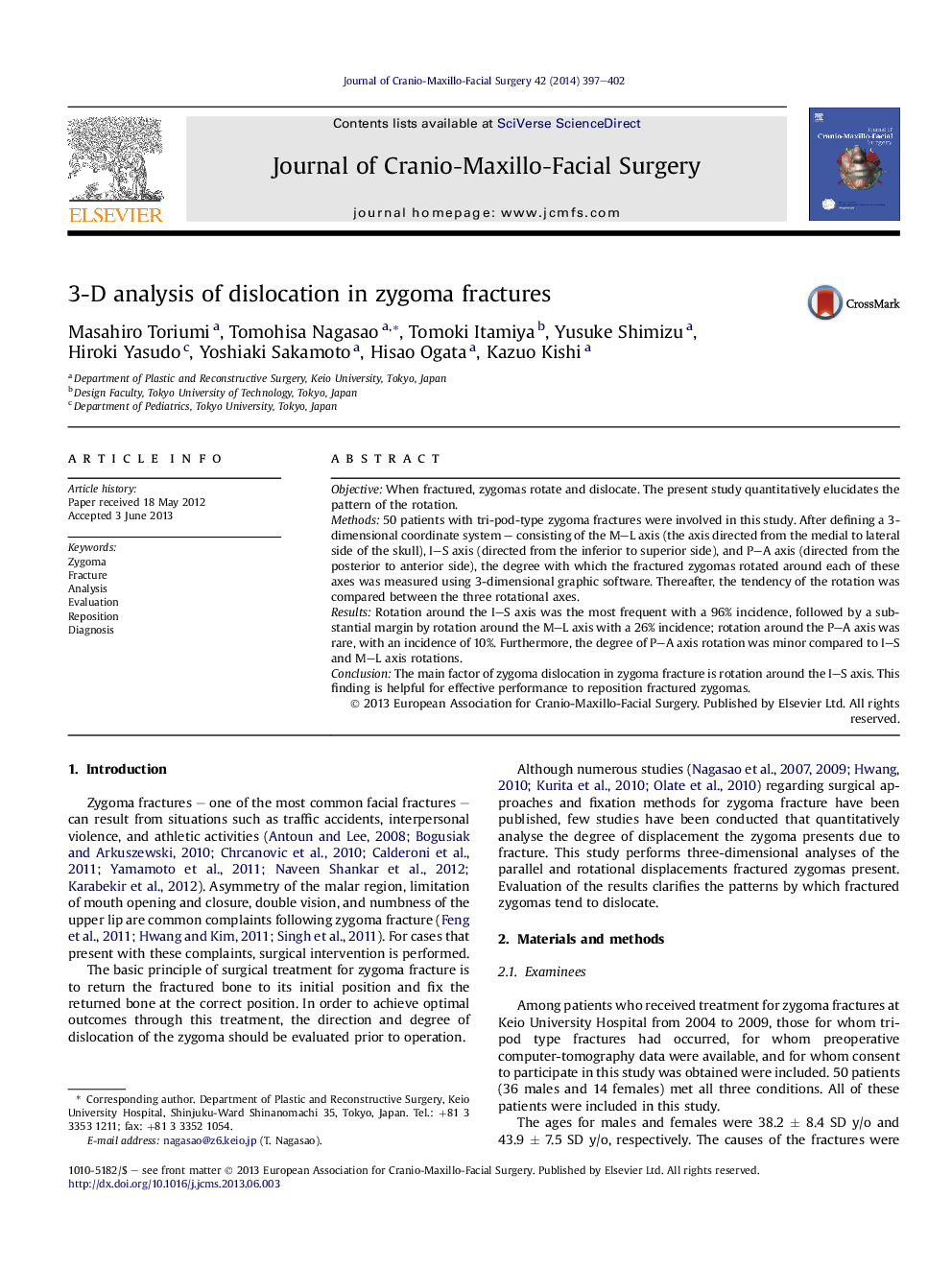| Article ID | Journal | Published Year | Pages | File Type |
|---|---|---|---|---|
| 3142556 | Journal of Cranio-Maxillofacial Surgery | 2014 | 6 Pages |
ObjectiveWhen fractured, zygomas rotate and dislocate. The present study quantitatively elucidates the pattern of the rotation.Methods50 patients with tri-pod-type zygoma fractures were involved in this study. After defining a 3-dimensional coordinate system – consisting of the M–L axis (the axis directed from the medial to lateral side of the skull), I–S axis (directed from the inferior to superior side), and P–A axis (directed from the posterior to anterior side), the degree with which the fractured zygomas rotated around each of these axes was measured using 3-dimensional graphic software. Thereafter, the tendency of the rotation was compared between the three rotational axes.ResultsRotation around the I–S axis was the most frequent with a 96% incidence, followed by a substantial margin by rotation around the M–L axis with a 26% incidence; rotation around the P–A axis was rare, with an incidence of 10%. Furthermore, the degree of P–A axis rotation was minor compared to I–S and M–L axis rotations.ConclusionThe main factor of zygoma dislocation in zygoma fracture is rotation around the I–S axis. This finding is helpful for effective performance to reposition fractured zygomas.
